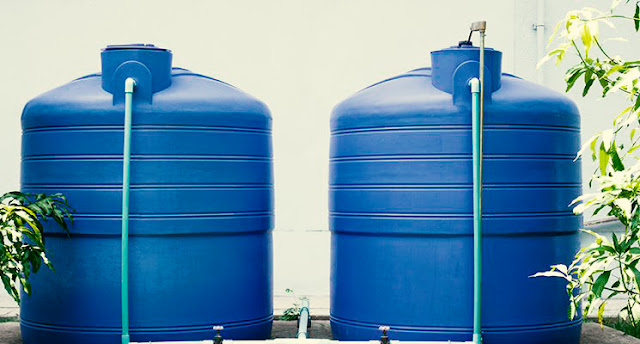
Tanks are storage instruments used for ages for different materials like grains, rations, water, oils, and other materials. Water tanks can be of any shape, size, capacity, and characteristic depending on the use. They can be inside or outside the house, underground, or at elevation on roofs.
Nowadays, water filters come with water storage tanks to provide purified water anytime. Most common individual water tanks at houses are present on roofs. Keeping water tanks at elevation prevents the requirement of external work for every time use of water, as gravity is always on work.
Types of Water Tanks
● Steel tanks – These are made of carbon welded steel and provide strength and durability. The assembly of tanks can be on or offsite depending on the steel type and capacity. The steel tanks can be corrugated with poly liners, galvanized, and stainless steel.
● Concrete tanks – These are strong, heavy, and durable. Additionally, they are resistant to hard water and can be situated above or below the ground. Again, they can be ferroconcrete or monolithic-pour concrete. The latter is suitable for rainwater harvesting due to its ability to neutralize the acidity of rainwater.
● Fiberglass tanks – It holds applicability under and above the ground and is lightweight and rigid. The fiberglass tanks are also easily repairable.
● Plastic tanks – These are highly common at residential sites. These tanks can be installed both above and underground. You can easily attach additional equipment to these tanks. These are lightweight and available in various sizes, shapes, and colors per the requirement.
Why is a plastic water tank made of polyethylene?
Polyethene is the polymer form of ethylene that can have either linear or cross-linkage. Polyethylene tanks usually constitute linear medium or high-density polyethylene. These resist hazardous environmental conditions and possess excellent mechanical properties and strength. Linear polyethylenes are generally approved for food and medical usage.
Cross-linked polyethylenes are high-density polyethylenes manufactured using the catalyst. The addition provides high tensile strength and resistance to impact and fracture.
Characteristics of plastic water storage tanks:
Polyethene or plastic water tanks are one of the best water tanks due to their ability to meet the following required characteristics:
UV treatment: Overhead and above-ground tanks remain under sunlight, thus being exposed to sun rays for long durations. UV rays from sunlight can degrade the material and affect water quality. Therefore, UV-treated water tanks prevent UV rays from crossing the tank and are necessary.
Durability: Medium or high-density polyethylene imparts this characteristic. Being exposed to extreme weather conditions, it needs to have strength and durability.
Food grade quality: The general purpose of water storage is the consumption of different activities, including cooking and drinking. Thus, inert leakproof material is needed to avoid water quality degradation.
Temperature maintenance and resistance: India has a diverse geography as a whole country. It witnesses different temperatures in different regions. Plastic tanks are renowned for their temperature maintenance and resistance. These tanks adapt to the temperature changes in other areas and do not affect the temperature of the water inside the tank by more than ten degrees.
Tested and certified: Several organizations have set guidelines for water storage tanks. The tanks must be certified by such organizations as FDA, BIS, and ISI.
Resistance: Water contains different ions, salts, and acidic or alkaline constituents. If the tank gets corroded by the presence of any of these, it can never have a long life.
Full storage capacity: Capacity requirement depends on the usage and number of family members. The water tank must meet every individual’s needs.
Warranty: A water tank for home is a long time investment. The warranty period should be at least five years.
Conclusion
Water storage tanks serve multiple purposes in households and industries. Besides storing pumps and underground water, the water storage tank is also used for rainwater harvesting, which is further used for drinking, cooking, and consumption. In such conditions, the water tank should be of food-grade quality, inert, and resistant to extreme environmental conditions and the hardness of the water. Polyethene water tanks meet all the requirements and provide other additional benefits.
